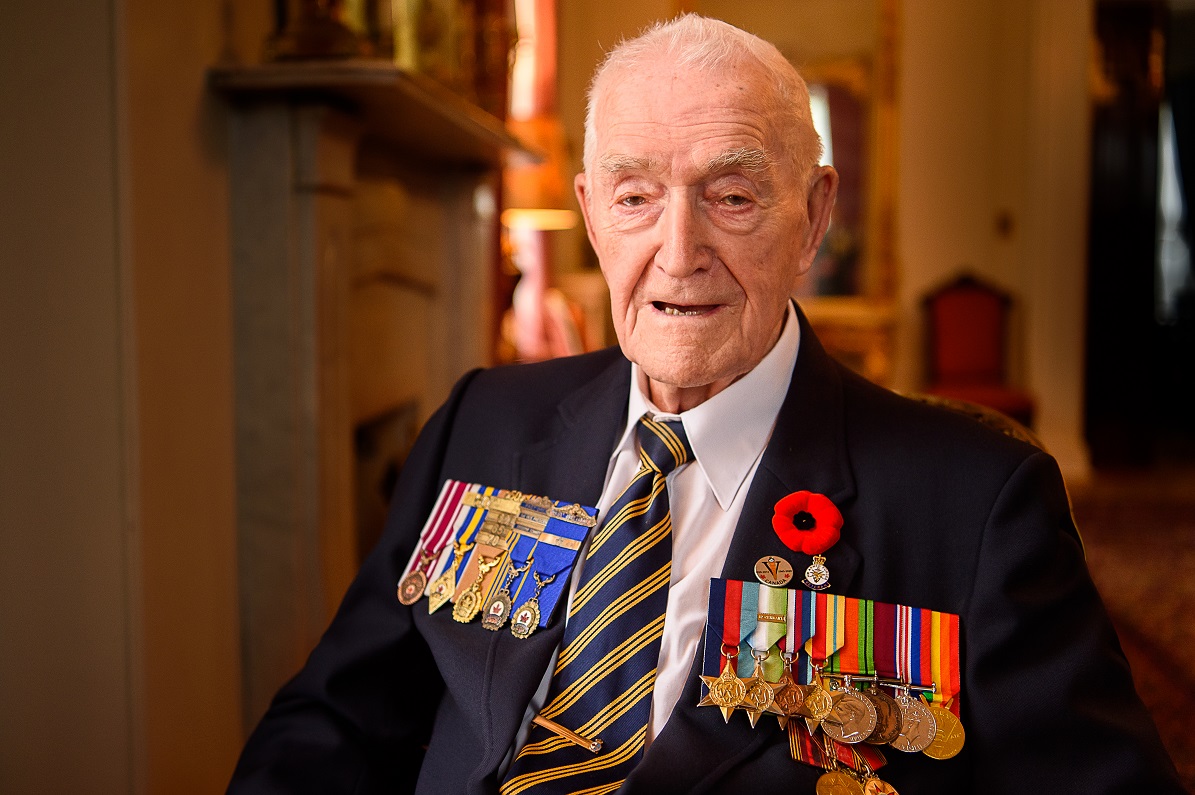Able Seaman (Ret’d) Charles Starkes
With a father in the Merchant Navy and an uncle who died in the First World War, Charles Starkes’ enlistment in the Royal Navy carried on a tradition of military service in his family. He enlisted in November of 1940. He was 18 years old.

"It wasn't a celebration; it was a mournful thing" said Charles Starkes when asked about the Halifax ceremonies marking the 75th anniversary of D-Day and the Battle of Normandy this past June. "Even the weather was bad—but that's what it was like on the morning of D-Day."
As a native of Mount Pearl, Newfoundland, joining the navy made sense to Starkes. "Everybody was going—that was the thing to do. Most of my friends joined the navy you see. My father always went to sea—he was in the Merchant Navy—and all the men I knew were in the navy," he says.
Starkes was a torpedo man on HMS Tracker, whose primary role was to escort supply convoys throughout the North Atlantic and the Arctic regions. On D-Day, the Tracker's mission was to supply guns, tanks and artillery to troops on the beaches. Starkes' job was to load depth charges into planes. "It was miserable," he recalls.
One of Starkes' most memorable moments came a few days after the Normandy landings. On the night of June 10, 1944, the Tracker was getting ready to return to Belfast, Ireland. Starkes remembers, "All the boats were going back to where they came from because the war was still going on."
"B’y you better get up, this ship is going down!"
As the Tracker turned to leave, she collided with the Canadian frigate HMCS Teme which had been chasing a U boat. Both ships were in darkened ship routine, so neither saw the other until it was too late.
Not knowing the severity of the damage, Starkes headed down to his locker to save some of his personal items and found the area flooded. He was about to leave when he heard a strange sound, "As I was going up, I heard this fella snoring, and I says what the Lord is that there? So anyway, this fella was asleep, so I shook him and woke him up, and I says, B’y you better get up—this ship is going down!"
Neither the Tracker nor the Teme sank because of the incident. The collision smashed the Tracker's bow while the Teme had a gaping hole and lost four of her crew.
"We built the club ourselves, y’know. We went and got the lumber and everything else and stuck the place up. Poured the concrete and everything."
In his post-war years, Starkes continued to go to sea—he worked as an electrician with the Canadian Coast Guard where he installed generators in lighthouses. He explained that he and his fellow comrades were the founders of Mount Pearl’s Royal Canadian Legion. "We built the club ourselves, y’know. We went and got the lumber and everything else and stuck the place up. Poured the concrete and everything," he proudly says.
At 97, Starkes continues to be active in his community. He connects with others through music and is known for his skills on the harmonica which go back to his days in service. "I used to play for the boys on the boat," Starkes says. He sings as well and is a member of the Singing Legionnaires—a local choir made up of both legion members and non members—which visit retirement homes to “sing for the young folk,” as he says.
For his military service, Charles Starkes received the 1939-1945 Star, the Atlantic Star and Bar, the Arctic Star, the France and Germany Star, the Defence Medal, the War Medal 1939-1945, and the Medal of Ushakov.
In honour of the 75th anniversary of D-Day and the Battle of Normandy, Charles Starkes is one of our Faces of Freedom. We are honoured that he participated in commemorative ceremonies in Halifax as a member of the official Government of Canada delegation.
- Date modified: